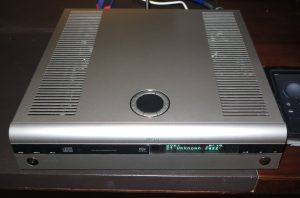The EU are now pursuing the right-to-repair issue in Europe
Article

Europeans want to see the ability for people to have consumer electronics repaired by independent technicians so they can see the equipment have a long service life
EU lawmakers call for a right to repair electronic equipment | PC World
My Comments
An issue that recently has been raised in the US is “right-to-repair”. This is to allow consumers to have their equipment repaired or upgraded by an independent technician rather than a manufacturer-approved technician.
Here it’s about avoiding the need to replace equipment once it breaks down or live through a fault like a cracked screen because it costs too much to repair. It also affects the ability to see a device serve us for the long haul such as not being able to upgrade it with higher-capacity data storage or improved functionality through its service life.
It also includes the availability of repairers who can keep our equipment in good repair such as being able to take our smartphones to the repair kiosks in the shopping malls when the screen breaks or the battery dies out.

Could that church or other community organisation use this espresso machine as part of their coffee-stall fundraiser without its use being questioned by the machine’s manufacturer?
For small businesses and community organisations, there is the issue of being able to use high-quality cost-effective equipment pitched at the domestic market yet be able to seek repairs at a cost-effective price even though the equipment such as a microwave oven or premium “bean-to-cup” espresso machine is used in what is seen by the manufacturer as “commercial use”.
There is also the issue of seeking insurance coverage for repairs done to equipment that had suffered damage, something that can affect policies that provide accidental-damage coverage or industry-specific liability coverage associated with providing services. In this case, there is more incentive to have the repair covered without any party needing to be slugged extra when it comes to premiums or excesses.
The European Union have tackled this issue under many fronts when it comes to equipment being maintained in Europe.
Here, it encompasses the availability of spare parts, tools and knowledge to independent European-based repairers, including the ability to easily dismantle the product rather than having parts like batteries glued in to it. This includes having the spare parts available for the product’s lifespan and function. In some ways I would also see it as encouraging “parts-common”design approaches where equipment uses parts that are common with prior designs or maintaining a particular design platform for a very long time but providing incremental improvements.
Personally, I would also like to see the availability of “official” optional-function modules and accessories for the product available also for its lifespan. This is important with European-designed electronics, especially television sets, where the manufacturers were providing modules to add functionality to these devices like teletext reception, viewdata terminal functionality or picture-in-picture functionality once a technician installed the required module.
The Europeans also demonstrate an interest in the “right-to-repair” issue because they want to see more European-based employment of technicians in European-based repair workshops along with the sale of second-hand equipment within Europe. Let’s not forget a call-back to European values when it comes to how consumer electronics and similar items offered in that area by European firms are designed and manufactured. It is infact something I have noticed with equipment that has a strong European pedigree like the Freebox Révolution, and the AVM Fritz!box routers or even the Revox B77 open-reel tape deck which I had regarded as the “Technics SL-1200” of open-reel stereo tape decks – a model that existed for a long time with a large parts base and given respect by personal and professional users. This is where there is an emphasis on a long service life and the ability to see a continual product-improvement cycle over a long time even for existing products.
Here, the Europeans are also using another angle to approach the “right-to-repair” issue. They want to provide an incentive for manufacturers to offer repairable products by requiring them to extend the warranty period on the product if it takes more than a month for a warranty repair job to be completed.
They also want to see some form of standard consumer-facing identification of products prior to purchase to highlight their durability and repairability. This also includes the continual availability of updated firmware for these products so there is a committment to data security but also the ability for a device to adapt to newer circumstances.
At least Europe is joining in with the USA to push for “right-to-repair” along with having equipment designed for a long service life rather than ending up as e-waste.
